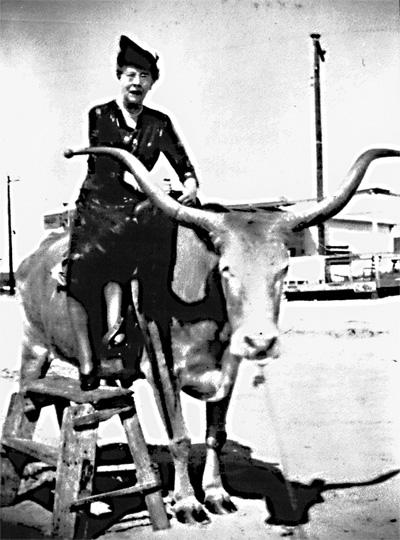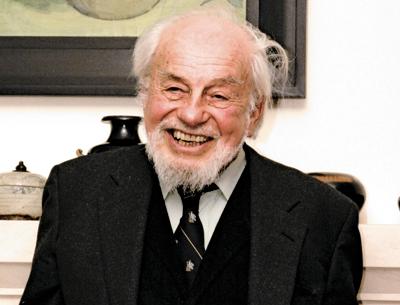Guestwords: Why Not Maidstone?
Guestwords: Why Not Maidstone?
In the end it really boiled down to Nelson Osborne declaring it wasn’t a good idea. The proposal to consider a name change for the Incorporated Village of East Hampton developed at a village board meeting and ended with reader feedback through The East Hampton Star. Jud Banister, well into his third term as village mayor, surfaced the suggested name change at the board’s regular March 21, 1941, meeting. The minutes reflect that the board members C. Louis Edwards, Charles O. Gould, Chester M. Cloud, and Willard B. Livingston, and the clerk, J. Edward Gay Jr., “were enthusiastic concerning the proposed change, and requested that Mayor Banister write a letter to the East Hampton Star in which he would recommend the change. . . .” The Star published his letter the following week.
“Suggests Change of Name to Maidstone From East Hampton,” declared the eye-catching title of a letter to the editor starting on the front page. As background, Jud pointed out that the village boundaries were the same as the old Maidstone Fire District, and “since the incorporation and more particularly since I have become Mayor, it has been brought to my attention many times that a large number of our people would like to change the name of the Incorporated Village of East Hampton to the Village of Maidstone.” He went on to say he had written the postmaster general to determine any possible issues.
The official reply noted that while there were a number of other East Hamptons of both one and two words in other states, there were no other Maidstones. Further, the post office would have no objection to a name change.
Jud told The Star his purpose was to start a discussion though the paper of the advisability of changing the village’s name. He closed by asking, “Will you kindly publish this letter so that the people may be informed, and I hope they will express themselves without restraint.”
He got what he asked for, if not what he hoped. Over the next two weeks, readers’ comments came in. Though not overwhelming in number, they were clear in message. In short notes, Mrs. Francis H. McIver and Mrs. Virginia Kent Cummins enthusiastically endorsed the name change. Mrs. McIver, lamenting that East Hampton was not sufficiently socially distinct from Southampton, proclaimed that the name Maidstone “is euphonious and charming.” A call to action if ever there was one! Mrs. Cummins called the proposed name “a beautiful name — a distinguished name with international associations” and thought the mayor’s suggestion should be implemented, “the sooner the better!”
But three others objected. And perhaps the most persuasive was Nelson C. Osborne’s lengthy defense of keeping the name East Hampton.
Nelson wasn’t just anybody, but, as he pointed out with unabashed pride, a ninth-generation Main Street Osborne tracing to the first English settlers of East Hampton. In addition, he served three terms as president of the incorporated village from 1922 to 1925 before the title was changed to mayor. He started his letter, “It is with reluctance that I take pen in hand to oppose any change in the name of this community. Our good mayor is honest in his opinion and has the best interests of the Village at heart, but I do not believe he has ‘thought through’ on the subject.” The education of Jud and the board began so they could think it through.
Osborne went on to remind readers that East Hampton had been the name for nearly 300 years and no one had felt the need to change it before. He further challenged the notion that the area had been called Maidstone for any significant length of time, citing Judge Henry P. Hedges’s “History of East Hampton” (1897) as evidence that it was called East Hampton at least as early as 1650. Osborne further cited town records pointing to the original land purchase from the Native Americans by Gov. Theophilus Eaton of the Colony of New Haven and Gov. Edward Hopkins of the Colony of Connecticut. That agreement, considered a deed for the land, was then assigned to the “inhabitants of East Hampton.”
Town records proved that the name East Hampton was consistently and purposefully used from 1649 to 1651 at the town’s formation. Suggesting that the village fathers perhaps had little moral authority to change the name, Osborne closed his letter by saying, “Two generations will hardly suffice to effect the change in the mind of man — the only place where it really means anything. To those living today it will always be East Hampton.”
A week later, Jack Hadder, writing from the University of Maryland, which he was attending, expressed similar views. Jack’s father served a period as town historian and compiled a history of the men who served in World War I, including the two New York Guard companies, Jud commanding Company 1 at the time. Jack had started writing his letter before he saw Nelson Osborne’s, and in a postscript to The Star suggested that they might not need to print his since his views mirrored Osborne’s. The Star printed both letter and postscript.
Perhaps capturing the sentiment of many who cherished the existing name and its associated history, Jack declared, “Surely those of us who ‘stick up’ for such things as tradition don’t want to have been born in East Hampton, lived in East Hampton, and died in Maidstone.”
No other letters to the editor were printed in the following weeks, and village minutes never reflected any initiative to put the issue before the voters. One of Jud’s strengths as mayor was his ability to seek and listen to all sides of a debate. He did, and though the number of comments were few, the weight of the opposition’s arguments, especially from a ninth-generation Main Street Osborne, were sufficient.
Osborne, always one to view any issue solely on its merits as he saw them, would months later strongly endorse through The Star Jud’s recommendation that the village purchase the decaying Dominy house on North Main Street for its historical value, containing both the family clock and woodworking shops. Both men were to be disappointed when no support was forthcoming, but Jud’s appeal and Osborne’s endorsement came only a few weeks after Pearl Harbor, when the war consumed the public’s attention.
Jud was still mayor during East Hampton’s 300th anniversary in 1948. As irony would manifest itself, he played the role of Gov. Edward Hopkins in the Guild Hall Players’ historical pageant, in scene two of the second episode, depicting buying from the Indians the land that became East Hampton. Is it possible that standing at the edge of the village green, Nelson Osborne turned to a nearby Mulford, or Gardiner, or Edwards, and said, “Do you remember the time the good mayor proposed renaming East Hampton?”
Steve Rideout, who lives in Shutesbury, Mass., regularly visits East Hampton to research family history. Jud Banister was the great-uncle of his wife, Carol Stanley Rideout.



